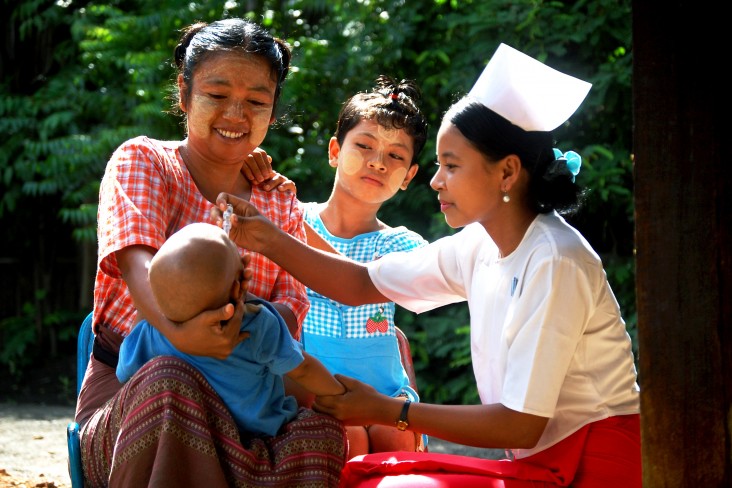Speeches Shim

Strengthening health information systems relies on the routine collection of health data to make evidence-informed decisions that improve health outcomes. DHS household data serves this purpose. It collects routine data, which can be compared across different years to help policymakers understand changes in health outcomes and behavior over time.
In the past, Burma lacked a systematic method to gauge its health situation. Policymakers had no way of knowing important pieces of health information, including the differences that persist between different genders, regions, and populations in a diverse nation, and compare those differences to populations in other countries. However, the Ministry of Health and Sports (MOHS) recently changed this reality by conducting Burma’s first national DHS. For the first time, this nationwide survey provided a clear analysis for government officials and partners to best prioritize health programming according to health, population, nutrition and socioeconomic indicators. With a team of multilingual data collectors representing both government and civil society, the DHS team traveled far and wide throughout a diverse nation characterized by differing cultures, languages, and ethnicities, as well as a history of civil conflict, to gather health information and conduct surveys. They gained the trust of men and women who discussed their experiences with pregnancy, childbirth, child illnesses, nutrition, family planning, domestic violence, and awareness about HIV. The results from the DHS survey are being used to prioritize and inform health programs, champion new national efforts to address malnutrition, and guide the MOHS’s National Health Plan for 2017-2021 to advance universal access to essential health services. These results will also serve to benchmark data obtained from country information systems and to monitor trends and progress going forward.
USAID supports health information activities to promote the collection, analysis, dissemination, and timely use of high-quality health information in evidence-based decision-making to save lives. Health information interventions aim to improve approaches and increase the use of data-driven tools, such as the Demographic and Health Survey (DHS); and to support strategic, incremental, and expansive improvements in integrated health information systems. Burma’s focus on health information interventions, when scaled up with a package of other proven health systems interventions, can contribute to saving over 55,000 lives from 2016-2020.
Meet more of the women and children that benefit from USAID's efforts.

Comment
Make a general inquiry or suggest an improvement.